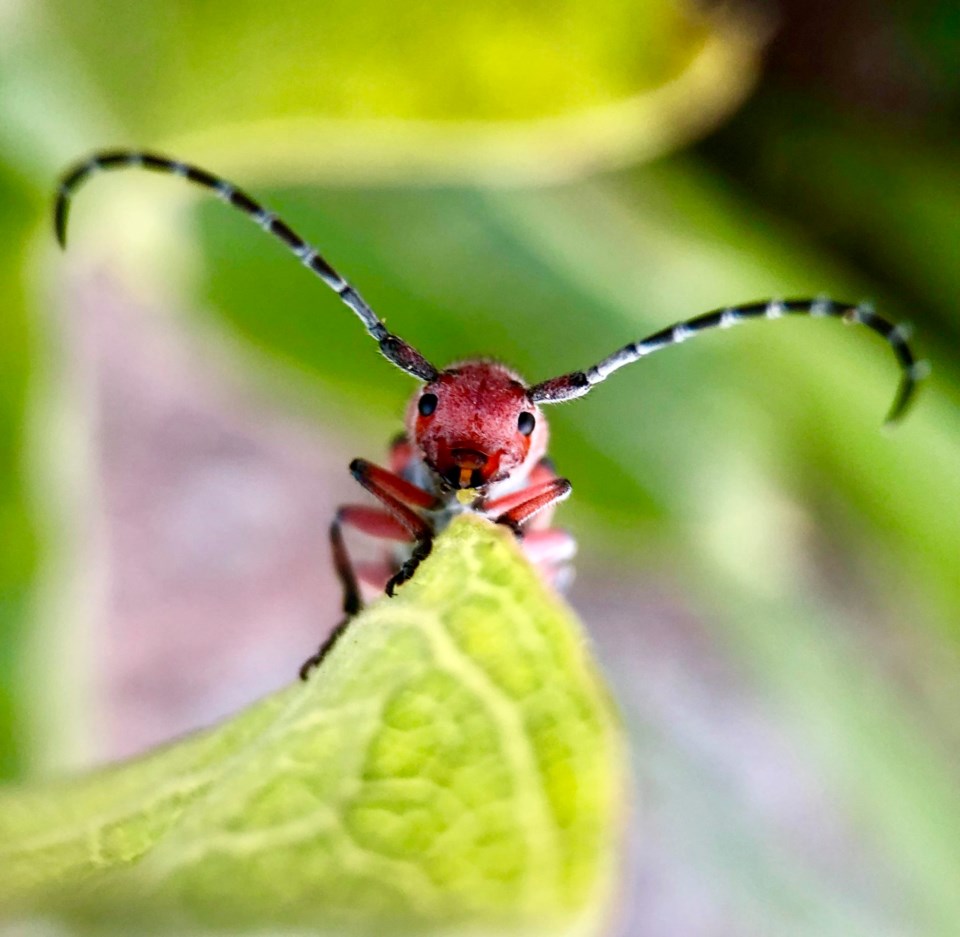The Longmont Leader accepts contributions, photos, letters to the editor, or LTEs, and op-eds for publication from community members, business leaders and public officials on local topics. Publication will be at the discretion of the editor and published opinions do not represent the views of the Longmont Leader or its staff. To submit a contribution, email [email protected].
If you step outside, into your backyard or take a walk to the park and pause for a moment, you probably notice a lot about the world around you: trees overhead, the scent of the warm earth, the blue sky or the crunch of leaves underfoot, but there’s a whole tiny world bustling around you, of which you may not notice. Under the fallen leaves and between blades of grass, live incredible creatures that, while small, play an important role in maintaining the world we live in. These little beings are called invertebrates, or animals without a backbone.
Believe it or not, invertebrates make up 97% of all animals on earth. Not only do invertebrates dominate the world in numbers, but they are also the most diverse and important group of animals for and the foundational animal species within all ecosystems on our planet and upon which all life relies.
Among the ecological services provided by invertebrates are recycling of organic matter, creation of soil, pollination, exerting natural biological controls, providing the base of food webs, and much more.
There are three main groups that may be familiar to you: insects, arachnids, and crustaceans.
Insects are the largest group of invertebrates and have six legs, two antennae, and three body parts. Some have wings, but not all. However, if an invertebrate has wings, it is an insect. Some common examples of insects are butterflies, beetles, bees and praying mantis.
Arachnids are animals with eight legs, no antennae and two body parts. Two arachnids you are probably most familiar with are spiders and scorpions. Arachnids are often feared; however, they are very beneficial to humans. Arachnids eat pest insects, keep insect populations down and are mostly harmless to humans.
Crustaceans are animals with 10-14 legs, four antennae, and two body parts. Some examples that might come to mind are crabs, lobsters and shrimp. While many crustaceans live underwater, there is one crustacean that is commonly seen outside in the dirt: a pill bug, commonly known as a roly poly, and sometimes a potato bug. Pill bugs are crustaceans that have adapted to live on land.
Invertebrates are small and often overlooked as gross or pesky, but they’re essential to maintaining the world as we know it. Living towards the bottom of the food chain, invertebrates are a vital food source for many animals. They occupy a critically important spot to ensure all the other animals further up the chain can survive. For example, crickets are eaten by spiders, then spiders are eaten by birds and then the birds are eaten by bigger predators such as lizards, snakes, foxes and bobcats. If the bottom of the food chain does not provide nutrients to higher up the chain, then the whole system fails. As part of this role, invertebrates ensure biological control, keeping an ecosystem in balance. “Biological control” means the control of pests in a natural way – without chemicals. Invertebrates simply eat the pests. Hate mosquitos and flies? Spiders are your friends! Without spiders making a meal of them, insect numbers would rise, creating an imbalance in the ecosystem.
Additionally, many insects are scavengers that feed on dead animals and plants, which recycle nutrients back into the soil, creating a cleaner environment and boosting soil quality. This is critical to ensuring thriving forests and other natural areas.
Not only are invertebrates a key component of maintaining the natural world, but they are also essential to the creation of products and services that benefit humans. Their “ecosystem services” ensure the production of food, medicines and ensure necessary decomposition of materials in our environment. Without bees, butterflies, beetles and other invertebrate pollinators, many plants would not be able to reproduce, and humans would lose access to many essential food sources. Common food products resulting from pollination include vegetables, fruits, seeds, nuts and oils. In fact, it’s estimated that one out of every three bites of food humans take is the result of a pollinator (including every bite of chocolate)!
These are just a few examples of the many ways invertebrates impact our world. So, next time you stop to smell the flowers, thank the invertebrates who helped them grow!



